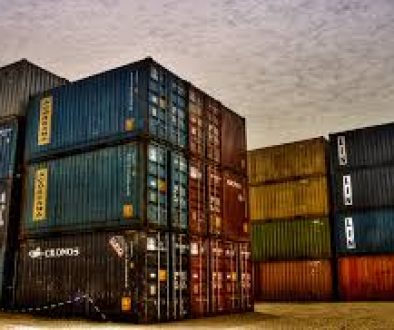Building a new shipping model
THE EVER-EVOLVING MAKEUP of the container shipping business is fascinating, if not amazing. About 60 years ago, a trucker from North Carolina put some trailers on the deck of a World War II-era vessel and began the evolution. Next came cellular ships, with containers of varying sizes, refrigerated, tanks, and flat racks. From modest 500-TEU ships to the newest 22,000-plus-TEU behemoths, the hardware has changed dramatically.
Likewise, shoreside cranes replaced onboard cranes of self-sustaining ships, and yard cranes replaced chassis on terminals. I could go on and on about the notable changes in the physical makeup of the industry.
Some reading this also will recognize the makeup of the key players then and now. Nine US-flag carriers in foreign commerce have been diminished to none (with due respect to Matson’s weekly Chinato-the-US West Coast service and 60 or so ships operated under the Maritime Security Program owned by “US citizens” who happen to be owned by foreign interests); six Japanese carriers are down to one, ONE (Ocean Network Express); six South American carriers are now owned by other interests; and 13 European-flag companies are essentially five.
To be sure, others have entered the scene, Mediterranean Shipping Co., CMA CGM, Cosco, Evergreen, Yang Ming, HMM, among those. But what used to be an industry of 15 to 20 major players in the world is now essentially the top five, which control 65 percent of global capacity and lift. Services provided by the world’s carriers also changed. From port to port, it emerged into intermodalism, offering rail ramp, truck ramp, and door moves initially in North America and now spread across the world.
The common thread is that one entity started something, to be followed by others in terms of equipment and services provided. Others quickly adopted innovation because of the competitive nature of the business. Absent the first few years of Sea-Land’s emergence into container ships, its own terminals, and wheels under every box, there were few changes that were differentiators for long.
We’re now watching the next phase of the evolution, and, at least temporarily, the common thread to follow the lead is breaking. Three distinguishable models are being developed. Two carriers have decided the status quo isn’t a practical business model — you really can’t make enough money to justify what you’re doing. Maersk and CMA CGM are embarking on a path to become fully integrated logistics and/or supply chain service providers. They’ve seen the ongoing rise of similar entities, with little capital required and an apparent ability to make money in almost any market, something they haven’t been able to do consistently in shipping.
The asset-light companies have done what the shipping lines try to do with little success: increase market share and make more money while doing it. Shipping lines manage to capture higher market shares among themselves, but at a steep price, all while losing share to the asset-light companies. Business schools around the world could spend years studying the root causes and defining the what-not-to-do models they could come up with easily. So, two carriers have decided to pursue a new business model.
The second model has been around since the early days of containerization, but the cast of characters has changed. Going back to my recitation of who made up the industry a few decades ago, many of those were state-owned or financially supported, primarily to protect their local markets and gain access to viable foreign currencies. We see the same model today: state-owned or financially supported companies, with a big push for support from manufacturers and agriculture under the flag of nationalism.
These entities may or may not be profit-driven. When nations decided to stop the cash infusions, most of their subsidized carriers went out of business or were sold. But several Asian nations are more than willing to continue the model, with varying degrees of support, but still pouring large sums of money into entities that have a purpose other than making money.
Then there is a third model, with MSC, the world’s second-largest container carrier, pouring billions of dollars into the cruise industry. If you think $175 million is a lot to spend on a 20,000-TEU container ship, try building state-of-the-art floating cities for 5,000 passengers at $700 million each — and not one or two, but 10 or more.
A couple of carriers have decided to just leave well enough alone. One is partially supported by a city government as opposed to a country, with a major shareholder who happens to own a large potion of an asset-light company that has grown and prospered.
So, what’s the takeaway? It depends on who you are and what your interests are. Just know that today’s seascape is very different than it was two decades ago. The emerging model will present different opportunities and challenges. Some might want to start thinking now about how to deal with it. JOC



